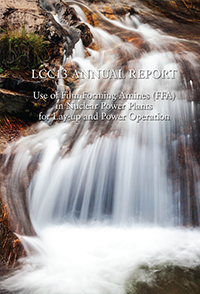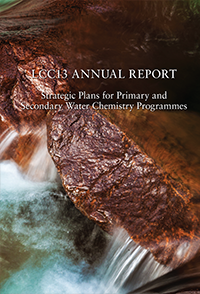Key Issues in Plant Chemistry and Corrosion – PWR, VVER, CANDU – 2018
(LCC14)
This first report on PWRs, VVERs, CANDUs and PHWRs summarises and analyses the results to assess in which specific situation the results are applicable and gives the point of view of A.N.T. International expert. Instead of giving a short summary of each paper presented at the conference, the report covers the key facts, either new or of significant interest for LCC customers.
This is of particular interest to discuss how to consider different presentations that may sometimes give contradictory or conflicting results.
The main examples concern zinc addition into the primary coolant, potential replacement of LiOH by KOH in PWRs as used in VVERS, Film Forming Amines, dispersant addition, hydrazine alternates. The advantages, disadvantages, questions or limitations of new solutions are explained.








